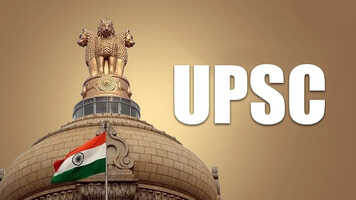Private Medical Colleges vs Government Institutions: Admission, Fees, and Outcomes
The differences between private and public medical schools in terms of admissions requirements, tuition, academic requirements, and employment outcomes.Picking the right medical college really counts if you're a student from India. While private ones offer certain perks, public institutions come with their own mix of pros and cons. Understanding these differences - like admission steps, expenses, or career outcomes - helps students make a clearer choice.
Admission Process
Public med schools across India pick students through a tight screening. Getting top grades in NEET - the national entry exam - is key. Rivalry keeps going strong because openings are scarce yet plenty aim for them.
Private medical colleges always check your NEET score. Yet a few offer backdoor spots through management seats. These let learners with weaker results get in - usually by coughing up more cash.
Students ought to go over every school’s entry guidelines closely. Public schools care mostly about grades, but private ones give extra chances via special or foreign student slots.
Fees and Financial Considerations
Private med schools usually cost way more than public ones do.
Public colleges are usually cheaper - sometimes just ₹50,000 up to ₹2,00,000 annually; so, many students find it easier to pay. While costs differ, they still fit within reach for countless individuals.
Private colleges can set you back anywhere from ₹10 lakh up to ₹50 lakh total. Still, some offer payment plans or even help with money through scholarships.
Most teens from regular-paying families tend to choose state-run schools since they’re cheaper. Yet a few opt for independent ones when they can cover higher fees or want faster sign-up.
Quality of Education and Facilities
Public schools often have experienced instructors while offering solid opportunities to focus on academics. Such spots generally feature major healthcare facilities close by, letting students get real-world training during direct patient interactions.
Private schools usually have newer buildings - also better dorms. Certain ones put extra effort into tech-driven learning while building ties overseas. Still, instruction standards aren't always consistent - picking one means digging deep first.
Career Outcomes
People who finish either kind of school can end up doing well as physicians. Those from public institutions might land more respect, plus they usually go for state positions or tough training spots.
Some who finish at private colleges do well - though debt stress can be tougher. Yet many head into clinics, labs, or jobs overseas instead. Staying connected, grabbing hands-on experience, while still in school shapes what comes next.
Conclusion
Public med schools cost less plus they’re well known. On the flip side, private ones give you up-to-date labs along with easier entry rules.
Students might want to look at their NEET results, how much it costs, what facilities are available, or even where they see themselves later on when picking a school. By digging into details, one could find the right fit - maybe end up thriving in healthcare down the road.
Latest Articles

Private Medical Colleges vs Government Institutions: Admission, Fees, and Outcomes
UniList Desk
Nov 05 2025
Future Physicians Training in Telemedicine and Remote Labs
UniList Desk
Nov 05 2025
The Future of the Hospitality Industry in the Digital Era
UniList Desk
Nov 05 2025
How to Crack UPSC Without Quitting Your Job
UniList Desk
Nov 05 2025
The Prospects of Educational Simulations and Digital Labs
UniList Desk
Nov 04 2025
5 Interesting Career Choices for Journalism Students in Future
UniList Desk
Nov 04 2025
Advances in Computer Engineering: AI, Machine Learning, and Beyond
UniList Desk
Nov 04 2025
Career Opportunities After Studying Architecture
UniList Desk
Nov 04 2025
Data Science's Place in Contemporary Research
UniList Desk
Nov 04 2025
The Role of Artificial Intelligence in Engineering Design
UniList Desk
Nov 03 2025
Learn More, Grow Faster
Get Updates Straight to Your Inbox!